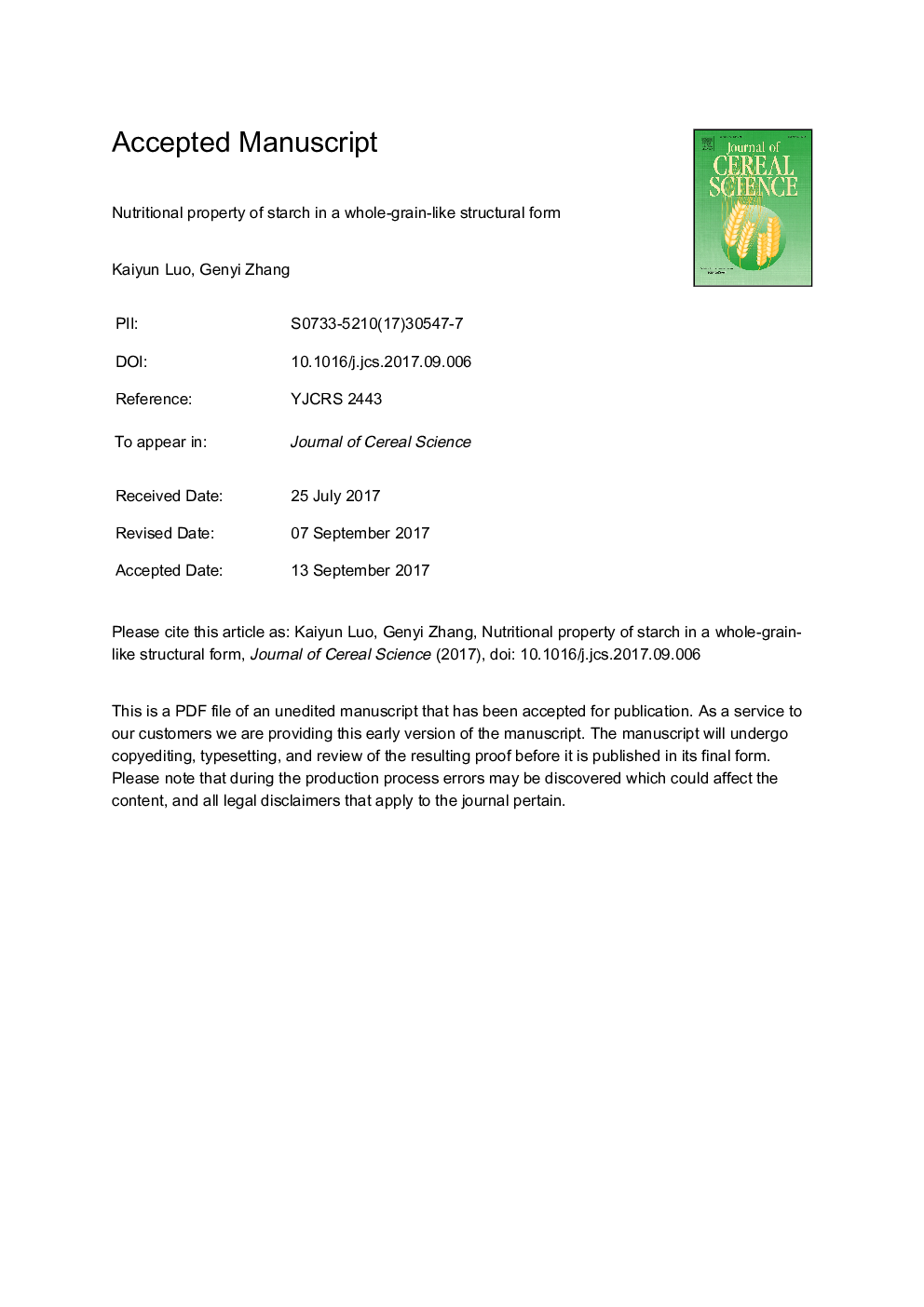| Article ID | Journal | Published Year | Pages | File Type |
|---|---|---|---|---|
| 8881459 | Journal of Cereal Science | 2018 | 19 Pages |
Abstract
Starch is the main constituent of cereal grains, but less attention has been paid for its contribution to the health benefits of whole-grain foods. In the current investigation, the slow digestion property of corn starch in a whole-grain-like structural form (WGLSF), which mimicked the whole grain microstructure, was studied to better understand the nutritional property of whole grain starch. The WGLSF-starch prepared through Ca2+-induced alginate gelation in the presence of starch and β-glucan showed a reduced content of rapidly digestible starch (RDS) (â¼40.4-23.6%) and increased content of resistant starch (RS) (â¼20.7-30.9%) and slowly digestible starch (SDS) (â¼38.9-47.8%) along the alginate concentrations (0.1-0.4%, w/v). Consistently, the postprandial glycaemic response of the cooked WGLSF-starch (0.3% alginate) exhibited a significant reduction (35.5%) of glucose peak compared to their physical mixture. Scanning electron microscope (SEM) observation demonstrated that the starch granules were embedded in the β-glucan-alginate co-formed gel matrix with a cell wall-like structure, which might cause a decrease of enzyme accessibility to the substrate, and ultimately a slow digestion profile of starch and reduced glycaemic response. Thus, maximization of the slow digestion property of starch in whole-grain food processing might be essential to further improve the nutritional property of whole-grain foods.
Keywords
Related Topics
Life Sciences
Agricultural and Biological Sciences
Agronomy and Crop Science
Authors
Kaiyun Luo, Genyi Zhang,
